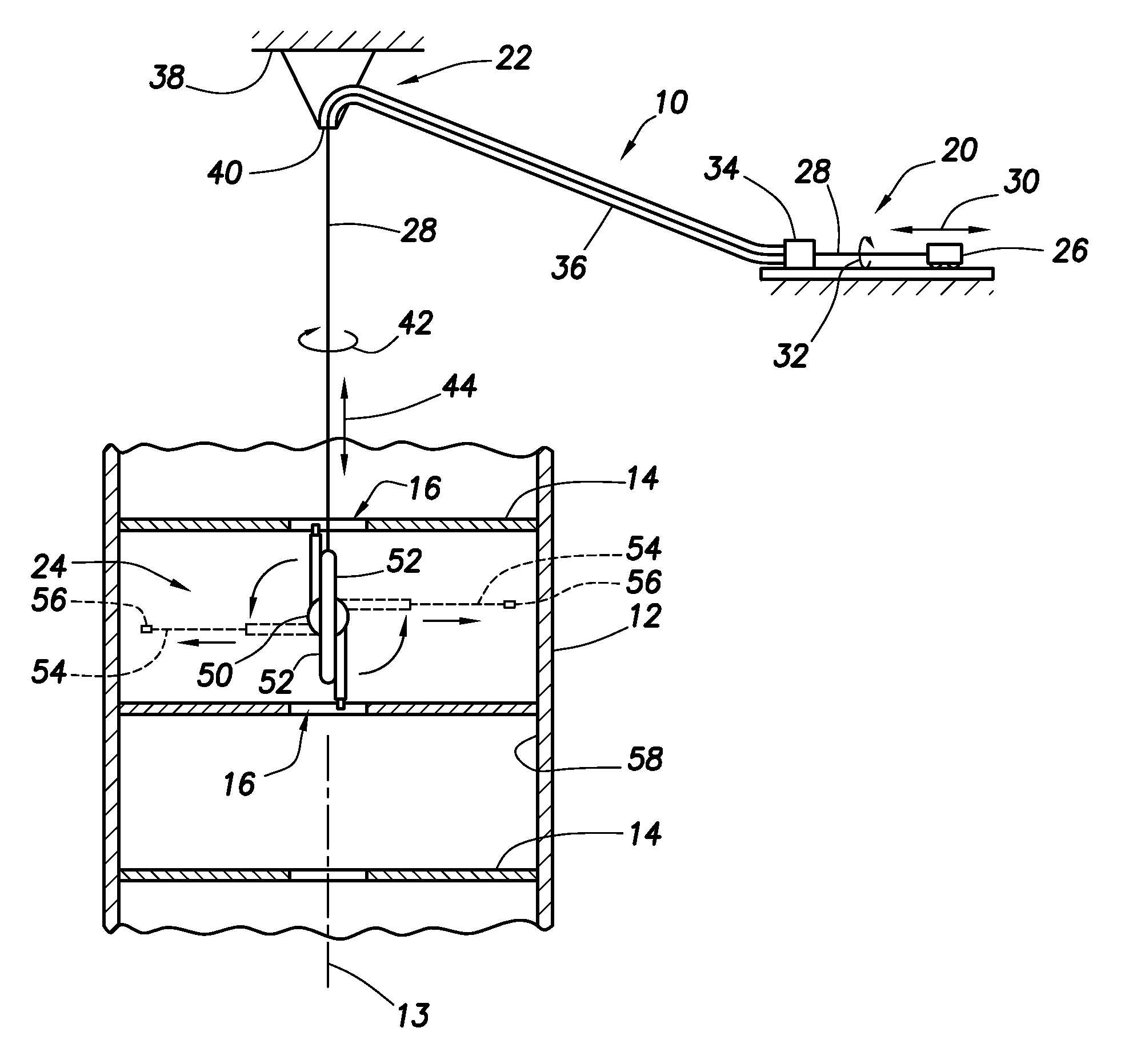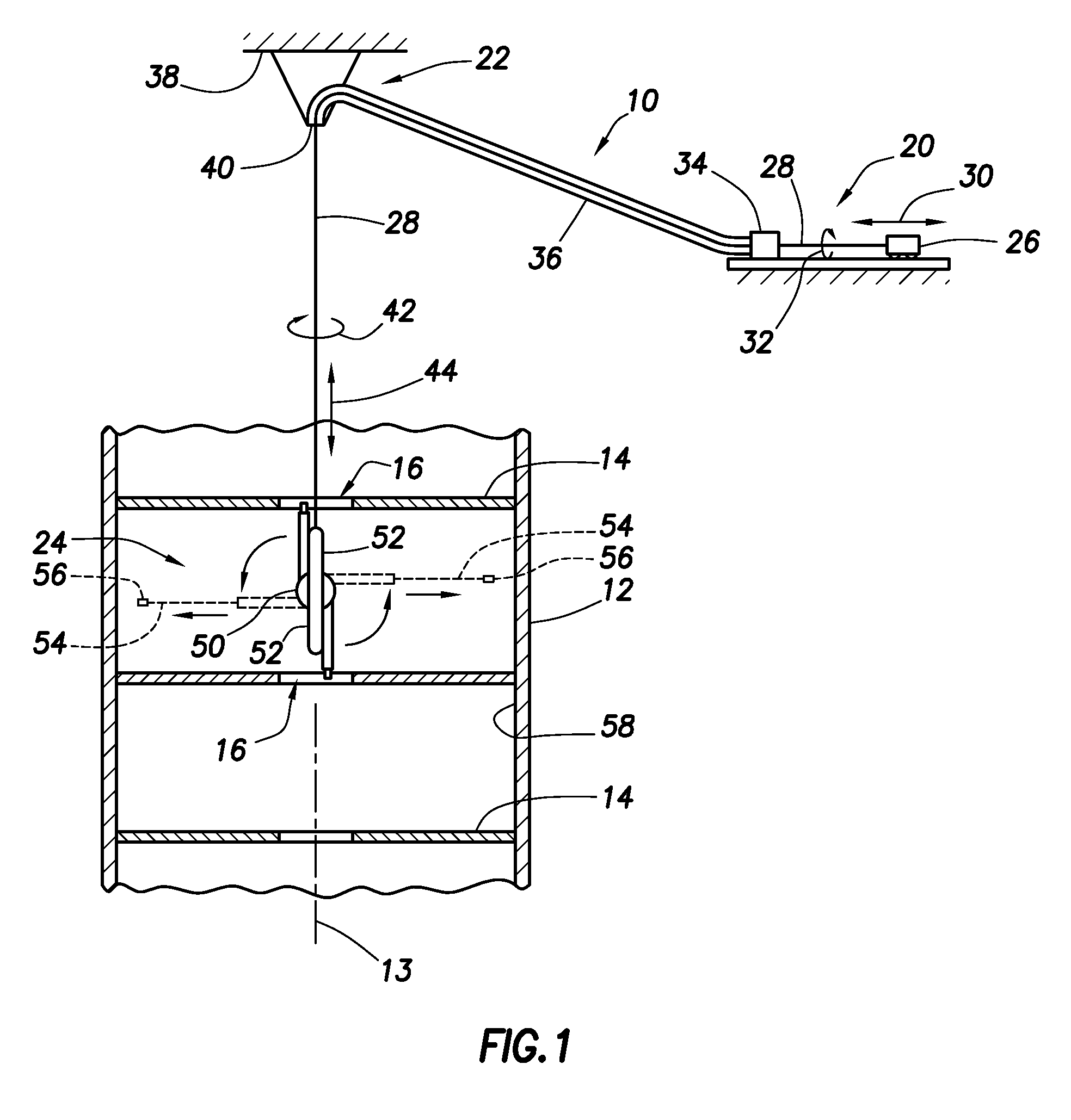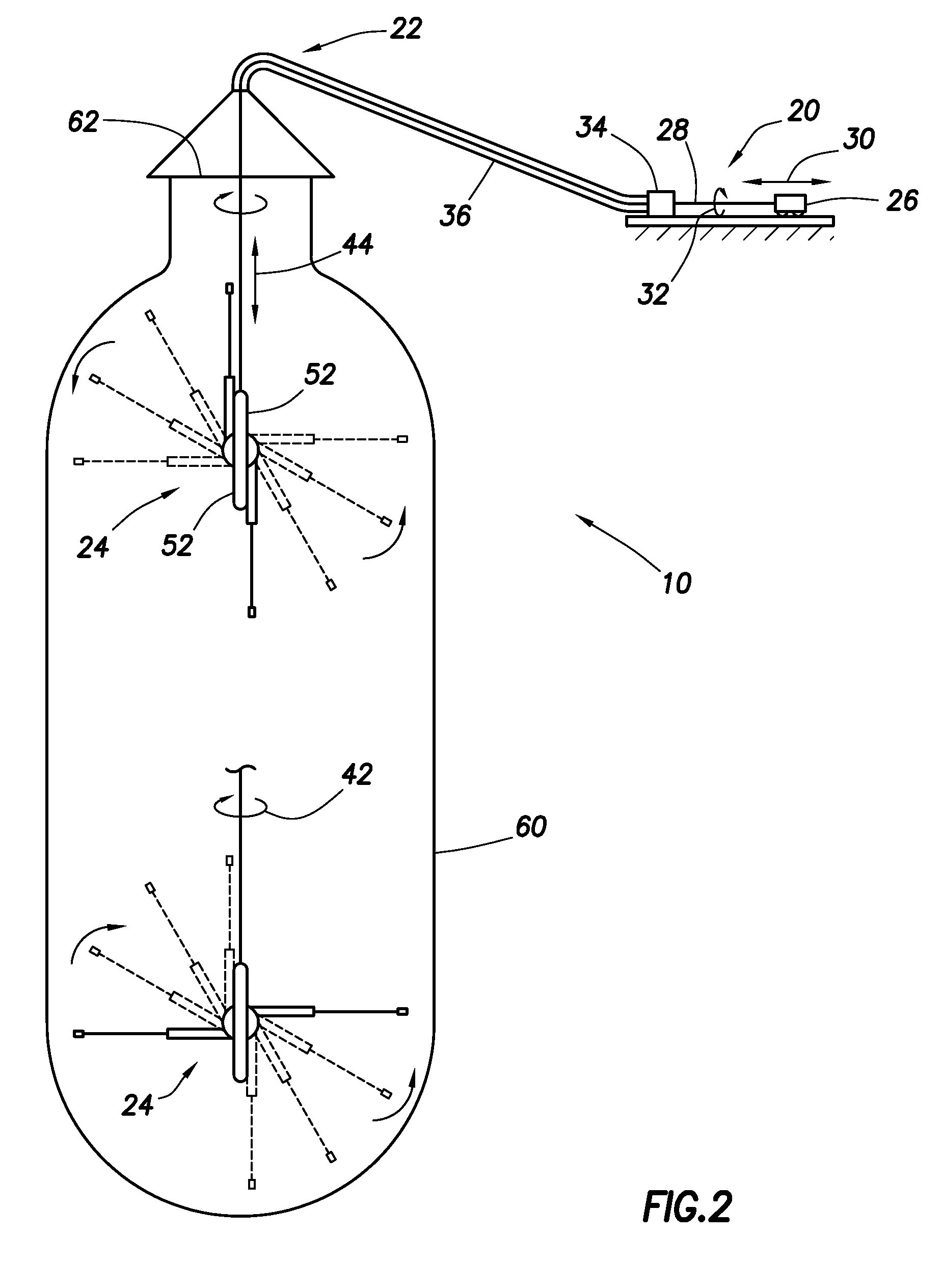High-Pressure Apparatus and Method for Removing Scale from a Tank
a technology of scale removal and high-pressure apparatus, which is applied in the direction of cleaning process and apparatus, chemistry apparatus and processes, and using liquids to clean, etc., can solve the problems of difficult cleaning problems, no one cleaning system will work adequately for all tanks, and it is difficult to find a single cleaning tool that fits all tanks and applications
- Summary
- Abstract
- Description
- Claims
- Application Information
AI Technical Summary
Benefits of technology
Problems solved by technology
Method used
Image
Examples
Embodiment Construction
[0026]FIG. 1 illustrates a presently preferred embodiment of the tank cleaning system 10 of this invention in a tank 12 with dividing plates 14 and a center hole 16 in each dividing plate. The tank is circular in cross section and oriented vertically along an axis 13. It should be understood that only a portion of the tank 12 is illustrated, and it may extend a substantial distance above and / or below the portion illustrated in FIG. 1.
[0027]The system 10 comprises a feed sub-system 20, a support 22, and a nozzle jet sub-system 24. The feed sub-system 20 includes a prime mover 26 which imparts lateral movement to a feed tube 28 as shown by an arrow 30. The prime mover 26 also imparts rotational movement to the feed tube 28, as shown by an arrow 32. The feed tube carries fluid, typically water, under high pressure for cleaning the interior of the tank 12 as described in greater detail below. The high pressure fluid is provided by a high pressure source, typically a compressor (not show...
PUM
 Login to View More
Login to View More Abstract
Description
Claims
Application Information
 Login to View More
Login to View More - R&D
- Intellectual Property
- Life Sciences
- Materials
- Tech Scout
- Unparalleled Data Quality
- Higher Quality Content
- 60% Fewer Hallucinations
Browse by: Latest US Patents, China's latest patents, Technical Efficacy Thesaurus, Application Domain, Technology Topic, Popular Technical Reports.
© 2025 PatSnap. All rights reserved.Legal|Privacy policy|Modern Slavery Act Transparency Statement|Sitemap|About US| Contact US: help@patsnap.com



